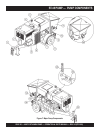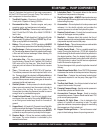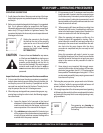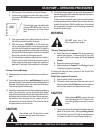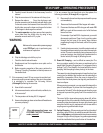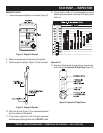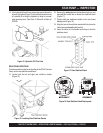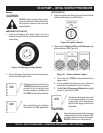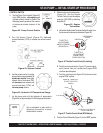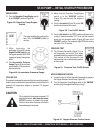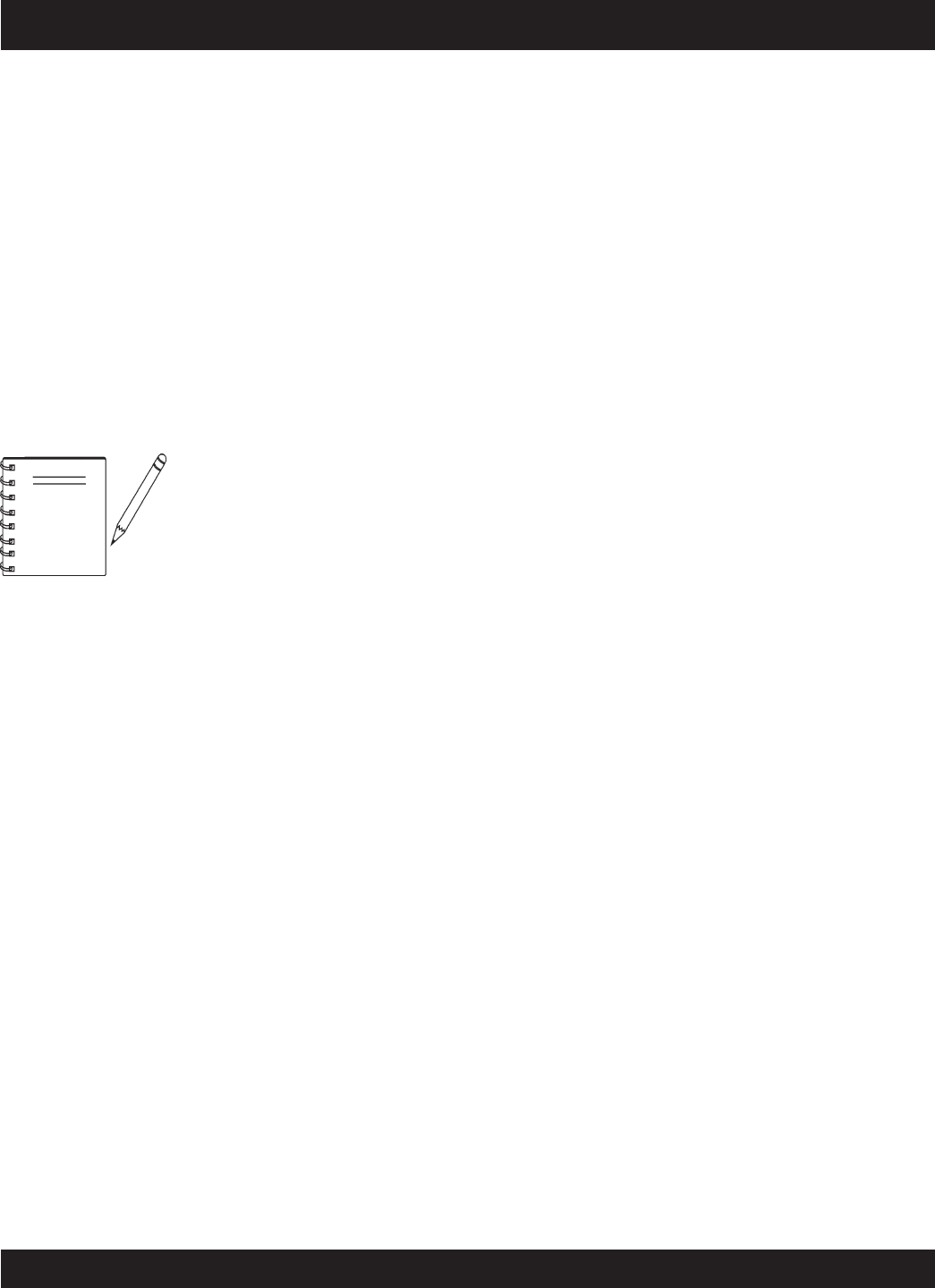
PAGE 28 — MAYCO ST-45HRM PUMP — OPERATION & PARTS MANUAL — REV. #4 (07/16/04)
ST-45 PUMP — OPERATING PROCEDURES
It is strongly recommended that
steel pipe be used on all vertical
pumping for safety and conve-
nience.
20. Pulsation – A slight pulsation of the hose will always be
noticeable near the pump. Excessive pulsation of the hose
near the pump is normally due to higher than average line
pressures caused by stiff, harsh mixes, or extremely long
pumping distances.
The use of 2 -1/2” I.D. hose in these extreme cases reduces
line pressures or the addition of slight amounts of water to the
mix, if permissible, will permit easier pumping. The use of
certain pumping admixtures may help.
If excessive pulsation exists in the hose, it is advisable to use
burlap or some means of wear protection under the hose at
points where the hose may wear through the outer cover; e.g.
over forms, steel or sharp curbs.
21. Snap-Joint – When using Snap-Joint couplings with gas-
kets to join hose, see that they are washed clean after each
job. Keeping the hose ends clean (heavy duty) is very impor-
tant for the best job setup. A thin coat of grease on the rubber
gasket or dipping both coupling and gasket in water before
coupling the hose will make for easier installation.
22. New Pumps – All new pumps are ‘water pressure tested” at
the factory This procedure permits a thorough inspection of
NOTE
entire drive system and valving under simulated full load
conditions. The pump owner can do the same by making an
adapter to couple to the end of the discharge cone: e.g., the
use of a standard 2" pipe cap with a 3/8" drilled hole in the
center, screwed on to the end of hinged cone or reducer at
the pump.
Fill hopper with water after making sure that all sand and rock
have been removed from manifold. Operate pump at full
throttle and the 3/8" diameter hole restriction will create
sufficient back pressure to make thorough inspection of all
moving parts.
Use a 25 ft. hose, or short section, off the pump; and for the
balance of the horizontal distance to the vertical line, use
steel pipe. This type of installation has been satisfactory on
many jobs being pumped in excess of 100 feet high. Line
pressures are always less using steel pipe as compared to
hose.
When pumping vertically, using
all hose
, it is recommended
not to go higher than 50 feet with hose. The hose should be
tied off at intervals of 10 feet, if possible. Special attention
should be given when tieing the hose off at the top as the hose
will have a tendency to stretch when filled with concrete. This
will increase the possibility of a blockage at the point where
the hose is tied off. To avoid this, a long radius of 90 degree
elbow is recommended. The suggested place to tie off is on
the hose, under the clamp.



